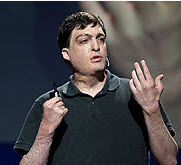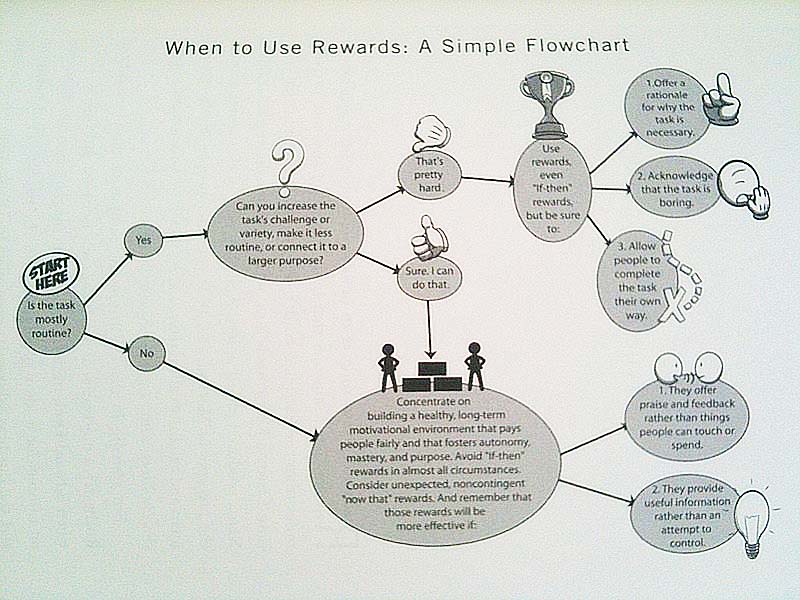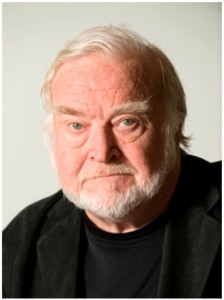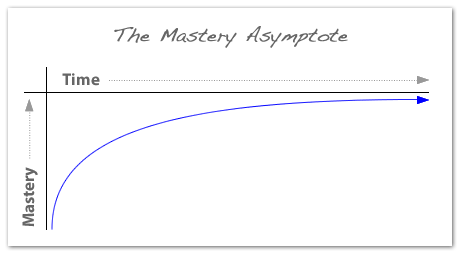“Pink’s analysis–and new model–of motivation offers tremendous insight into our deepest nature.”
-Publishers Weekly“Pink’s a gifted writer who turns even the heaviest scientific study into something digestible-and often amusing-without losing his intellectual punch.”
–New York Post“Pink is rapidly acquiring international guru status . . . He is an engaging writer, who challenges and provokes.”
–Financial Times
From Wikipedia:
Drive is a 2009 non-fiction book by Daniel Pink. In it, he suggests that motivation by means of rewards and fear of punishment, dominated by extrinsic factors such as money, is broken. The book claims that we have progressed into an era where our motivation is largely intrinsic, and that the aspects of this motivation can be divided into autonomy, mastery and purpose.
Check out my post on his famous ted talk:
Dan Pink on the surprising science of motivation
—
Here is my mind map summarizing the book.
link to mind map @ mindmeister
Further down are quotes, pictures, etc..
There is also a great RSA Animate / summary on youtube:
TOC
Introduction: The Puzzling Puzzles Harry Harlow Edward Deci
Part 1 A New Operating System
- Chapter 1 The Rise and Fall of Motivation 2.0
- Chapter 2 Seven Reasons Carrots and Sticks (Often) Don’t Work…
- Chapter 2A …and the Special Circumstances When They Do
- Chapter 3 Type I and Type X
Part 2 The Three Elements
- Chapter 4 Autonomy
- Chapter 5 Mastery
- Chapter 6 Purpose
Part 3 The Type I Toolkit
- Type I for Individuals: Nine Strategies for Awakening Your Motivation
- Type I for Organizations: Nine Ways to Improve Your Company, Office, or Group
- The Zen of Compensation: Paying People the Type I Way
- Type I for Parents and Educators: Nine Ideas for Helping Our Kids
- The Type I Reading List: Fifteen Essential Books
- Listen to the Gurus: Six Business Thinkers Who Get It
- The Type I Fitness Plan: Four Tips for Getting (and Staying) Motivated to Exercise
Drive: The Recap
—
Summary
Introduction: The Puzzling Puzzles Harry Harlow Edward Deci
We kick off with the stories and experiments of Harry Harlow and Edward Deci. Harlow’s experiment (lab monkeys solving a puzzle) produced a theory–what amounted to a third drive: “The performance of the task,” he said, “provided intrinsic reward. … The joy of the task was its own reward.”
The monkeys solved the puzzles simply because they found it gratifying to solve puzzles. They enjoyed it. The joy of the task was its own reward.
==========“When money is used as an external reward for some activity, the subjects lose intrinsic interest for the activity,” he* wrote. Rewards can deliver a short-term boost—just as a jolt of caffeine can keep you cranking for a few more hours. But the effect wears off—and, worse, can reduce a person’s longer-term motivation to continue the project.
==========
*Edward Deci“This is a book about motivation. I will show that much of what we believe about the subject just isn’t so–and that the insights that Harlow and Deci began uncovering a few decades ago come much closer to the truth.
Chapter 1 The Rise and Fall of Motivation 2.0
How we organize what we do
Wikipedia represents the most powerful new business model of the twenty-first century: open source.
==========
How we think about what we do
Economics, she explained, wasn’t the study of money. It was the study of behavior.
==========Daniel Kahneman, an American psychologist who won the Nobel Prize in economics that year for work he’d done with Israeli Amos Tversky, helped force a change in how we think about what we do.
==========
Daniel KahnenmanIn short, we are irrational—and predictably so, says Dan Ariely (author of Predictably Irrational)
==========
How we do what we do
An algorithmic task is one in which you follow a set of established instructions down a single pathway to one conclusion. That is, there’s an algorithm for solving it. A heuristic task is the opposite. Precisely because no algorithm exists for it, you have to experiment with possibilities and devise a novel solution.
==========Researchers such as Harvard Business School’s Teresa Amabile have found that external rewards and punishments—both carrots and sticks—can work nicely for algorithmic tasks. But they can be devastating for heuristic ones.
==========One business leader, who didn’t want to be identified, said it plainly. When he conducts job interviews, he tells prospective employees: “If you need me to motivate you, I probably don’t want to hire you.”
==========
Chapter 2 Seven Reasons Carrots and Sticks (Often) Don’t Work…
The best use of money as a motivator is to pay people enough to take the issue of money off the table.
==========
Less of what we want
Twain extracts a key motivational principle, namely “that Work consists of whatever a body is OBLIGED to do, and that Play consists of whatever a body is not obliged to do.”
==========
Intrinsic Motivation
Only contingent rewards—if you do this, then you’ll get that—had the negative effect. Why? “If-then” rewards require people to forfeit some of their autonomy.
==========Try to encourage a kid to learn math by paying her for each workbook page she completes – and she’ll almost certainly become more diligent in the short term and lose interest in math in the long term.
“People use rewards expecting to gain the benefit of increasing another person’s motivation and behavior, but in so doing, they often incur the unintentional and hidden cost of undermining that person’s intrinsic motivation toward the activity”
–>from a “behavioral science textbook”
This is one of the most robust findings in social science—and also one of the most ignored.
-Dan Pink
High Performance
“In 8 og 9 tasks* examined across the three experiments, higher incentives led to worse peformance”
* group of scientists (among them Dan Ariely) testing people in India. They tried to motivate people with low, medium and very high amounts of money…
Creativity
Challenge: Fix the candle to the wall so that the wax doesn’t drip on the table.
Rewards, by their very nature, narrow our focus. That’s helpful when there’s a clear path to a solution. They help us stare ahead and race faster. But “if-then” motivators are terrible for challenges like the candle problem. As this experiment shows, the rewards narrowed people’s focus and blinkered the wide view that might have allowed them to see new uses for old objects.
==========
MORE OF WHAT WE DON’T WANT
Unethical behavior
The problem with making an extrinsic reward the only destination that matters is that some people will choose the quickest route there, even if it means taking the low road.
In fact, the business school professors suggest they should come with their own warning label: “Goals may cause systematic problems for organizations due to narrowed focus, unethical behavior, increased risk taking, decreased cooperation, and decreased intrinsic motivation. Use care when applying goals in your organization.”
==========
Short-term thinking
Several researchers have found that companies that spend the most time offering guidance on quarterly earnings deliver significantly lower long-term growth rates than companies that offer guidance less frequently.
(One reason: The earnings-obsessed companies typically invest less in research & development)
==========So if students get a prize for reading three books, many won’t pick up a fourth, let alone embark on a lifetime of reading—just as executives who hit their quarterly numbers often won’t boost earnings a penny more, let alone contemplate the long-term health of their company.
==========
CARROTS AND STICKS: The Seven Deadly Flaws
- They can extinguish intrinsic motivation
- They can diminish performance
- They can crush creativity
- They can crowd out good behavior
- They can encourage cheating, shortcuts, and unethical behavior
- They can become addictive
- They can foster short-term thinking
Chapter 2A …and the Special Circumstances When They Do
The starting point, of course, is to ensure that the baseline rewards—wages, salaries, benefits, and so on—are adequate and fair. Without a healthy baseline, motivation of any sort is difficult and often impossible.
==========For routine tasks, which aren’t very interesting and don’t demand much creative thinking, rewards can provide a small motivational booster shot without the harmful side effects.
==========
How to motivate people to do routine tasks:
- Offer a rationale for why the task is necessary
(..can become more meaningful & engaing… ) - Acknowledge that the task is boring
(..act of empathy…) - Allow people to complete the task their own way
(think autonomy, not control)
In other words, where “if-then” rewards are a mistake, shift to “now that” rewards—as in “Now that you’ve finished the poster and it turned out so well, I’d like to celebrate by taking you out to lunch.”
==========
When to use rewards: A simple Flowchart (click to enlarge):
CHAPTER 3 – Type I and Type X
Richard Ryan & Edward Deci
“Deci and Ryan, in my view, are the sun around which all this other research orbits,” Pink says. “They’re true pioneers. Forty years from now, we’ll look back on them as two of the most important social scientists of our time.”
(quote is not from the book; here –> rocherster.edu)—————-
The combination has been powerful enough to make them among the most influential behavioral scientists of their generation. Together Deci and Ryan have fashioned what they call “self-determination theory (SDT).”
==========SDT: “Self-Determination Theory.” Many theories of behavior pivot around a particular human tendency……. SDT, by contrast, begins with a notion of universal human needs. It argues that we have three innate psychological needs–competence, autonomy, and relatedness. When those needs are satisfied, we’re motivated, productive, and happy. When they’re thwarted, our motivation, productivity, and happiness plummit.”
Human beings have an innate inner drive to be autonomous, self-determined, and connected to one another. And when that drive is liberated, people achieve more and live richer lives.
==========SDT is an important part of the “Positive Psychology Movement”, which has reoriented the study of psychological science away from its previous focus on malady & dysfunction and toward well-being and effective functioning
One of positive psychology’s most influential figures is Mihaly Csikszentmihalyi
==========
The power of the alphabet
…and later in a groundbreaking book called The Human Side of Enterprise in 1960, (Douglas) McGregor argued that those running companies were operating from faulty assumptions about human behavior.
==========
Check out –> Theory X and Theory Y
Type I and Type X (introduced by Dan Pink)
Type X behavior is fueled more by extrinsic desires than intrinsic ones. It concerns itself less with the inherent satisfaction of an activity and more with the external rewards to which that activity leads.
==========Type I behavior is fueled more by intrinsic desires than extrinsic ones. It concerns itself less with the external rewards to which an activity leads and more with the inherent satisfaction of the activity itself.
==========I use these two letters for the “x” in extrinsic and the “i” in intrinsic as well as to pay homage to Douglas McGregor.
For Type I’s, the main motivator is the freedom, challenge, and purpose of the undertaking itself; any other gains are welcome, but mainly as a bonus.
==========Type I’s almost always outperform Type X’s in the long run.
–
Type I behavior is both born & made.
–
Type I behavior does not disdain money or recognition.
(“One reason fair and adequate pay is so essential is that it takes the issue of money off the table so they can focus on the work itself. By contrast, for many Type X’s, money is the table.. It’s why they do what they do. Recognition is similar.”)
–
Type I behavior is a renewable resource.
–
Type I behavior promotes greater physical and mental well-being.Ultimately, Type I behavior depends on three nutrients: autonomy, mastery, and purpose. Type I behavior is self-directed. It is devoted to becoming better and better at something that matters. And it connects that quest for excellence to a larger purpose.
Part 2 The Three Elements
CHAPTER 4 – Autonomy
ROWE: Results-only Work Environment.
“More companies will migrate to this (ROWE) as more business owners my age come up. My dad’s generation views human beings as human resources. They’re the two-by-fours you need to build your house,” he says. “For me, it’s a partnership between me and the employees. They’re not resources. They’re partners.”
– Jeff Gunther
Players & Pawns
If, at age fourteen or forty-three, we’re passive and inert, that’s not because it’s our nature. It’s because something flipped our default setting.
==========It requires resisting the temptation to control people—and instead doing everything we can to reawaken their deep-seated sense of autonomy.
==========Perhaps it’s time to toss the very word ‘management’ into the linguistic ash heap alongside ‘icebox’ and ‘horseless carriage.’ This era doesn’t call for better management. It calls for a renaissance of self-direction.
In short, management isn’t the solution; it’s the problem.
The Four Essentials
Type I behavior emerges when people have autonomy over the four T’s: their task, their time, their technique, and their team.
==========
TASK
“Hire good people, and leave them alone.”
– William McKnightMcKnight’s innovation remains in place at 3M. But only a surprisingly small number of other companies have moved in this direction, despite its proven results. The best-known company to embrace it is Google, which has long encouraged engineers to spend one day a week working on a side project.
==========Autonomy over task is one of the essential aspects of the Motivation 3.0 approach to work.
==========
TIME
The billable hour is a relic of Motivation 2.0. It makes some sense for routine tasks—whether fitting doors onto the body of a Ford Taurus…
==========But the billable hour has little place in Motivation 3.0. For nonroutine tasks, including law, the link between how much time somebody spends and what that somebody produces is irregular and unpredictable.
==========If we begin from an alternative, and more accurate, presumption—that people want to do good work—then we ought to let them focus on the work itself rather than the time it takes them to do it.
==========Already, a few law firms are moving in this new, more Type I direction—charging a flat rate rather than a time-based fee—with the presiding partner of one of New York’s leading law firms recently declaring, “This is the time to get rid of the billable hour.”
==========Now, albeit slowly, the ROWE approach is spreading. The corporate headquarters of another American retailer, Gap Outlet, has gone ROWE.
==========At Netflix, the vacation policy is audaciously simple and simply audacious. Salaried employees can take as much time off as they’d like, whenever they want to take it, so long as their work is covered. Nobody—not managers or employees themselves—tracks vacation days.
==========
Technique
Team
At Facebook, newly hired engineers spend six weeks in company boot camp—fixing software bugs, learning the culture, and meeting new colleagues. Then after they’ve interviewed with the company’s various engineering teams, they decide which one to join. In other words, Facebook selects the talent. But the talent selects her team.
The ART of AUTONOMY
Whether you’re fixing sinks, ringing up groceries, selling cars, or writing a lesson plan, you and I need autonomy just as deeply as a great painter.
==========
CHAPTER 5 – Mastery
You need not see what someone is doing
to know if it is his vocation.
You have only to watch his eyes;
a cook mixing a sauce, a surgeon
making a primary incision,
a clerk completing a bill of lading,
wear the same rapt expression, forgetting
themselves in a function.How beautiful it is,
that eye-on-the-object look.
—W.H Auden–
Control leads to compliance; autonomy leads to engagement. And this distinction leads to the second element of Type I behavior: mastery—the desire to get better and better at something that matters.
==========Gallup’s extensive research on the subject shows that in the United States, more than 50 percent of employees are not engaged at work—and nearly 20 percent are actively disengaged.
The Cost of all this disengagement: about $300 billion a year in lost productivity
==========According to the consulting firm McKinsey & Co., in some countries as little as 2 to 3 percent of the workforce is highly engaged in their work.
==========He (Csikszentmihalyi) began by writing about creativity. Creativity took him into the study of play. And his exploration of play unlocked an insight about the human experience that would make him famous. In the midst of play, many people enjoyed what Csikszentmihalyi called “autotelic experiences”—from the Greek auto (self) and telos (goal or purpose). In an autotelic experience, the goal is self-fulfilling; the activity is its own reward.
Painters he observed during his Ph.D. research, Csikszentmihalyi said, were so enthralled in what they were doing that they seemed to be in a trance. For them, time passed quickly and self-consciousness dissolved.
==========Perhaps equally significant, he replaced that wonky Greek-derived adjective with a word he found people using to describe these optimal moments: flow. The highest, most satisfying experiences in people’s lives were when they were in FLOW.
==========In flow, goals are clear. You have to reach the top of the mountain, hit the ball across the net, or mold the clay just right. Feedback is immediate.
In flow, people lived so deeply in the moment, and felt so utterly in control, that their sense of time, place, and even self melted away. They were autonomous, of course. But more than that, they were engaged. They were, as the poet W. H. Auden wrote, “forgetting themselves in a function.”
==========
Goldilocks on a cargo ship
As Fast Company magazine has noted, a number of companies, including Microsoft, Patagonia, and Toyota, have realized that creating flow-friendly environments that help people move toward mastery can increase productivity and satisfaction at work.
==========And then there’s Jenova Chen, a young game designer who, in 2006, wrote his MFA thesis on Csikszentmihalyi’s theory. Chen believed that video games held the promise to deliver quintessential flow experiences, but that too many games required an almost obsessive level of commitment. Why not, he thought, design a game to bring the flow sensation to more casual gamers?
==========
The Three Laws of Mastery
Mastery Is a Mindset
Carol Dweck’s signature insight is that what people believe shapes what people achieve.
If you believe intelligence is something you can increase, then the same encounters become opportunities for growth. In one view, intelligence is something you demonstrate; in the other, it’s something you develop. (Dweck)
==========“With a learning goal, students don’t have to feel that they’re already good at something in order to hang in and keep trying. After all, their goal is to learn, not to prove they’re smart. (Dweck)
==========“Figure out for yourself what you want to be really good at, know that you’ll never really satisfy yourself that you’ve made it, and accept that thats okay.”
~ Robert B. Reich (Former U.S. Secretary of Labor)Type X behavior often holds an entity theory of intelligence, prefers performance goals to learning goals, and disdains effort as a sign of weakness. Type I behavior has an incremental theory of intelligence, prizes learning goals over performance goals, and welcomes effort as a way to improve at something that matters. Begin with one mindset, and mastery is impossible. Begin with the other, and it can be inevitable.
Mastery Is Pain
As wonderful as flow is, the path to mastery—becoming ever better at something you care about—is not lined with daisies and spanned by a rainbow. If it were, more of us would make the trip. Mastery hurts. Sometimes—many times—it’s not much fun.
==========Mastery—of sports, music, business—requires effort (difficult, painful, excruciating, all-consuming effort) over a long time (not a week or a month, but a decade).
– Anders Ericsson
==========
—————————————————————————————————
At this point I need to put in a comment myself:
Please read Malcolm Gladwell’s fantastic book: Outliers: The Story of Success
He writes a lot of interesting things about mastery / experts / etc…
10,000 hours… no less!
————————————————————————————————–
“Being a professional,” Julius Erving once said, “is doing the things you love to do, on the days you don’t feel like doing them.”
==========
Mastery is an Asymptote
You can approach it. You can home in on it. You can get really, really, really close to it. But like Cézanne, you can never touch it. Mastery is impossible to realize fully.
==========
THE OXYGEN OF THE SOUL
The experiment suggests that flow, the deep sense of engagement that Motivation 3.0 calls for, isn’t a nicety. It’s a necessity. We need it to survive. It is the oxygen of the soul.
==========And one of Csikszentmihalyi’s more surprising findings is that people are much more likely to reach that flow state at work than in leisure.
==========Over lunch, Csikszentmihalyi and I talked about children. A little kid’s life bursts with autotelic experiences. Children careen from one flow moment to another, animated by a sense of joy, equipped with a mindset of possibility, and working with the dedication of a West Point cadet. They use their brains and their bodies to probe and draw feedback from the environment in an endless pursuit of mastery.
Then -at some point in their lives- they don’t.
What happens? You start to get ashamed that what you’re doing is childish…. what a mistake.
==========Left to their own devices, Csikszentmihalyi says, children seek out flow with the inevitability of a natural law. So should we all.
==========
CHAPTER 6 – Purpose
The pattern is the same in many other prosperous countries… if you’ve reached the age of sixty, you’re more than likely to live into your eighties.
The Purpose Motive
autonomy & mastery are essentials, but for proper balance we need purpose
The most deeply motivated people–not to mention those who are most productive and satisfied–hitch their desires to a cause larger than themselves.
“Purpose provides activation energy for living,” psychologist Mihaly Csikszentmihalyi told me in an interview. “I think that evolution has had a hand in selecting people who had a sense of doing something beyond themselves.”
==========
Goals
The aims of these Motivation 3.0 companies are not to chase profit while trying to stay ethical and law-abiding. Their goal is to pursue purpose – and to use profit as the catalyst rather than the objective.
Words
People at work are thirsting for context, yearning to know that what they do contributes to a larger whole. And a powerful way to provide that context is to spend a little less time telling how and a little more time showing why
Policies
According to The Boston Globe: Companies can improve their employees’ emotional well-being by shifting some of their budget for charitable giving so that individual employees are given sums to donate, leaving them happier even as the charities of their choice benefit
THE GOOD LIFE
“These findings are rather striking,” the researchers write, “as they suggest that attainment of a particular set of goals [in this case, profit goals] has no impact on well-being and actually contributes to ill-being.”
==========“People who are very high in extrinsic goals for wealth are more likely to attain that wealth, but they’re still unhappy,” Ryan told me.
==========profit counts… but it’s not the only thing. Indeed, if we were to look at history’s greatest achievements – from the printing press to constitutional democracy to cures for deadly diseases – the spark that kept the creators working deep into the night was purpose at least as much as profit
We know that human beings are not merely smaller, slower, bettersmelling donkeys trudging after that day’s carrot. We know—if we’ve spent time with young children or remember ourselves at our best—that we’re not destined to be passive and compliant. We’re designed to be active and engaged. And we know that the richest experiences in our lives aren’t when we’re clamoring for validation from others, but when we’re listening to our own voice—doing something that matters, doing it well, and doing it in the service of a cause larger than ourselves.
==========
—
Part 3 The Type I Toolkit
For this last part of the book I’ll just throw in some quotes..
So before you go to sleep each night, ask yourself the small question: Was I a little better today than
==========Use noncontrolling language. Next time you’re about to say “must” or “should,” try saying “think about” or “consider” instead. A small change in wording can help promote engagement over compliance and might even reduce some people’s urge to defy.
==========When he talks to employees, he listens carefully for the pronouns they use. Do employees refer to their company as “they” or as “we”? “They” suggests at least some amount of disengagement, and perhaps even alienation. “We” suggests the opposite—that employees feel they’re part of something significant and meaningful.
==========Trouble is, most of our workforce policies are designed for the 15 percent. These autonomy-crushing restrictions exist to threaten the shirkers and constrain the bad actors rather than assist the workhorses and liberate the good actors. So even though most people could handle Netflix’s vacation non-policy, most organizations keep a lid on vacation time so a small group of losers won’t abuse the system. Even though many people could work more productively in a ROWE, companies don’t embrace the concept because they fear some employees will spend their time roaming Facebook rather than doing their job. (Note to boss: That’s what they’re doing now.) But what if we flipped our thinking—and designed our workplace policies for the 85 percent rather than the 15 percent?
==========All kids start out as curious, self-directed Type I’s. But many of them end up as disengaged, compliant Type X’s. What’s going on? Maybe the problem is us—the adults who are running schools and heading families. If we want to equip young people for the new world of work—and, more important, if we want them to lead satisfying lives—we need to break Motivation 2.0’s grip on education and parenting.
==========We can do better. And we should. If we want to raise Type I kids, at school and at home, we need to help them move toward autonomy, mastery, and purpose.
==========Here’s why combining allowances with chores is not good for kids. By linking money to the completion of chores, parents turn an allowance into an “if-then” reward. This sends kids a clear (and clearly wrongheaded) message: In the absence of a payment, no self-respecting child would willingly set the table, empty the garbage, or make her own bed. It converts a moral and familial obligation into just another commercial transaction—and teaches that the only reason to do a less-than-desirable task for your family is in exchange for payment.
==========Whatever they’re studying, be sure they can answer these questions: Why am I learning this? How is it relevant to the world I live in now?
==========we have to make it much easier to get rid of bad teachers. Teaching, like any profession, has its share of duds. Showing these folks the door, which now is quite difficult, is essential. It’s better for students, of course. But it’s also better for the teachers who remain. Just as it’s very motivating to have great colleagues, it’s incredibly de-motivating to have lazy or incompetent ones.
==========One of the best ways to know whether you’ve mastered something is to try to teach it. Give students that opportunity.
==========What’s the difference between those who are pretty good at what they do and those who are masters? Fortune magazine’s Colvin scours the evidence and shows that the answer is threefold: practice, practice, practice.
==========The best moments usually occur when a person’s body or mind is stretched to the limits in a voluntary effort to accomplish something difficult and worthwhile.”
==========





















